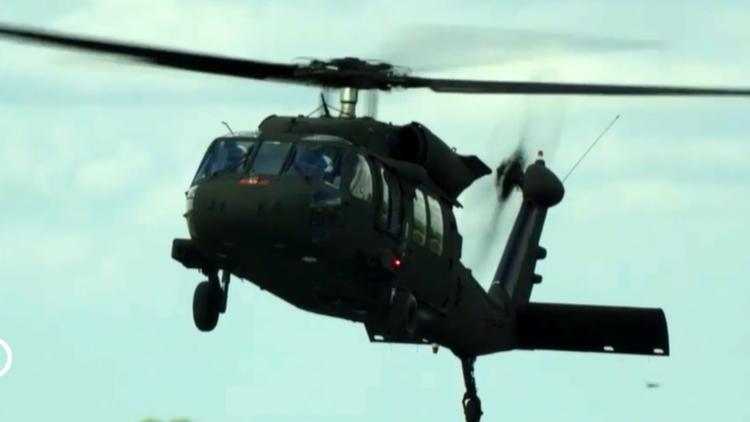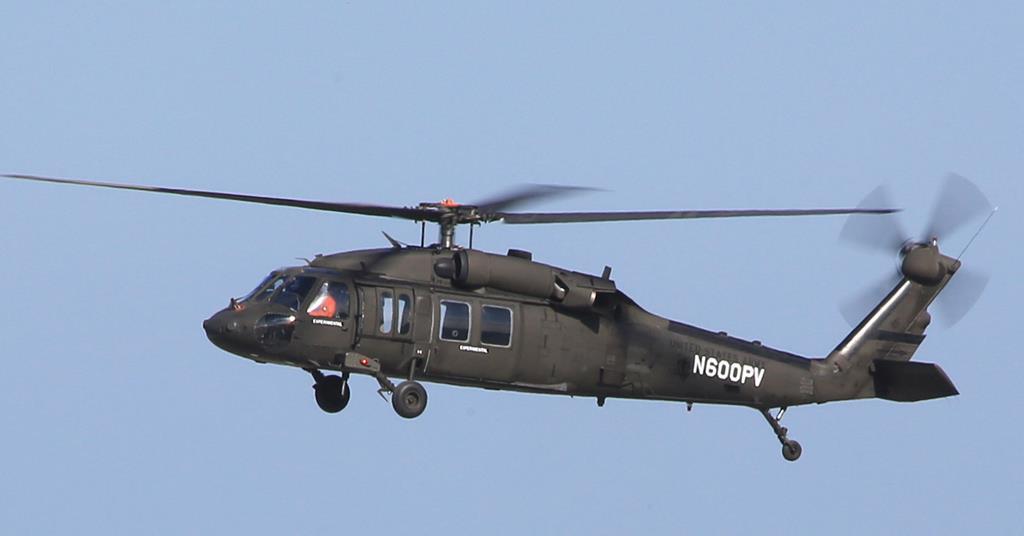The Development of the UH60 Blackhawk Helicopter from Its First Implementation to Today
The Development of the UH60 Blackhawk Helicopter from Its First Implementation to Today
Blog Article
Learn Everything About the UH60 Blackhawk Helicopter: A Comprehensive Guide for Fanatics
The UH-60 Blackhawk helicopter stands as a testimony to engineering excellence and army advancement, having evolved significantly given that its intro in the late 1970s (UH60 Blackhawk Helicopter). Its design not just resolves the requirements of modern war however also mirrors a dedication to flexibility and reliability. As we discover its diverse roles-- from army transport to clinical discharge-- we discover the nuances that have actually solidified its condition as a crucial property in different functional theaters. What makes the Blackhawk specifically intriguing is the selection of variants created to meet certain mission demands, each with its very own distinct capacities.

Background of the UH60 Blackhawk
Although the UH-60 Black Hawk helicopter was presented in the late 1970s, its development was rooted in a demand for a versatile and trusted energy airplane for the united state Army. Following the Vietnam War, which highlighted the limitations of existing helicopters, the Army looked for a contemporary airplane that might carry out a selection of objectives, including army transport, clinical evacuation, and logistical assistance. In 1972, the Army launched the Utility Tactical Transportation Aircraft System (UTTAS) program, intending to replace the aging UH-1 Iroquois.

The UH-60 was formally introduced into service in 1979 and rapidly ended up being a workhorse for the U.S. armed force, joining countless problems and humanitarian missions. Its adaptability and integrity have actually cemented its duty as a crucial property in contemporary military aeronautics.

Design and Requirements
Its airframe is built from advanced composite materials and aluminum alloys, ensuring durability while keeping weight to a minimum. The Black Hawk actions 64 feet long and has a blades size of 53 feet, permitting a sizable cabin efficient in fitting up to 11 troops or a substantial freight tons. The helicopter also features a four-blade major blades system and a two-blade tail rotor, which add to its secure trip qualities and superior ability to move.
The layout integrates advanced avionics and systems for boosted situational understanding, including evening vision compatibility. Furthermore, the UH-60's low-profile shape and capacity to operate in varied atmospheres make it suitable for a large range of objectives, from medical discharge to troop transport and logistical assistance. In general, the Black Hawk's design mirrors its diverse duty in contemporary military procedures.
Key Attributes and Abilities
Versatility is a characteristic of the UH-60 Black Hawk helicopter, which is furnished with a range of vital functions and capacities that improve its operational efficiency. One of one of the most notable attributes is its twin-engine style, which gives outstanding power and reliability, allowing it to run in different environmental problems. The aircraft is powered by 2 General Electric T700-GE-701C engines, permitting a maximum cruise ship rate of approximately 150 knots and a solution ceiling of 19,000 feet.
The Black Hawk's innovative avionics suite includes a digital cabin, evening vision compatibility, and boosted situational awareness systems, which considerably enhance pilot efficiency and goal implementation. Its robust airframe and composite rotor blades contribute to its agility and toughness, making it qualified of withstanding unfavorable weather condition and battle problems.
In addition, the helicopter flaunts a sizable cabin, suiting up to 11 troops or a variety of cargo configurations. Its versatile design permits fast reconfiguration for various goal accounts, from clinical discharge to logistical support. The Black Hawk additionally sustains a series of tools systems, improving its ability to supply close air support when needed. In general, these essential features ensure that the UH-60 Black Hawk remains an essential asset in numerous army procedures.
Functions in Military Procedures
An essential element of modern army procedures, the UH-60 Black Hawk helicopter serves in numerous functions that enhance its critical worth. Mainly recognized for its convenience, the Black Hawk is utilized in troop transportation, allowing quick implementation of soldiers to and from combat areas, thus improving functional efficiency. Its capacity to carry clinical employees and equipment makes it essential for aeromedical discharge, guaranteeing prompt care for damaged personnel.
In Addition, the Black Hawk plays an important duty in logistical support, shuttling supplies, ammo, and tools to forward running bases, which is important in maintaining armed forces operations. The airplane also stands out in search and rescue goals, utilizing its agility and rate to navigate complicated surfaces and remove personnel in distress. moved here Furthermore, the Black Hawk is outfitted for reconnaissance and surveillance, supplying real-time knowledge to ground forces.
In special operations, the helicopter's flexibility permits it to support elite systems with accuracy insertions and removals, frequently under negative problems. This complex operational capability highlights the Black Hawk's value within army frameworks, demonstrating its essential function in modern war approaches.
Popular Models and variations
A number of significant versions and versions of the UH-60 Black Hawk helicopter have actually been created to fulfill specific you could look here operational needs across various military branches and missions. One prominent variant is the UH-60L, which features updated avionics, engines, and an electronic cabin, boosting its efficiency and functional capacities. The UH-60M stands for an additional development, including innovative trip control systems, enhanced survivability attributes, and enhanced haul capability.
The HH-60G Lead Hawk, created for search and rescue objectives, is geared up with advanced navigating and communication systems, enabling it to operate in hostile settings. The SH-60 Seahawk alternative serves the U.S. Navy, specializing in anti-submarine war and maritime operations, showcasing its convenience past land involvements.
Additionally, the UH-60Q model is tailored for medical evacuation, featuring specific devices to sustain patient treatment during transport. The latest model, the UH-60V, concentrates on modernization, incorporating innovative technology to expand the helicopter's operational lifespan. On the whole, these variations exemplify the flexibility and continued importance of the Black Hawk helicopter across varied armed forces operations.
Final Thought
The UH-60 Blackhawk helicopter stands as a testament to cutting-edge armed forces engineering, symbolizing flexibility and integrity in various functional contexts. UH60 Blackhawk Helicopter. Its development, driven by lessons found out from past problems, has promoted important roles in army transportation, medical discharge, and reconnaissance. With a series of versions tailored to certain missions, the Blackhawk continues to play an important duty in modern army procedures, ensuring its standing as an indispensable property in the defense landscape
The UH-60 Black Hawk helicopter includes a durable design that stresses flexibility and functional performance.Flexibility is a characteristic of the UH-60 Black Hawk helicopter, which is equipped with a variety of vital features and capacities that enhance its operational performance.A vital part of contemporary army visite site operations, the UH-60 Black Hawk helicopter serves in numerous duties that enhance its calculated value.Several remarkable variants and designs of the UH-60 Black Hawk helicopter have actually been created to meet particular operational requirements throughout numerous military branches and objectives. On the whole, these variants exhibit the adaptability and proceeded importance of the Black Hawk helicopter across varied army procedures.
Report this page